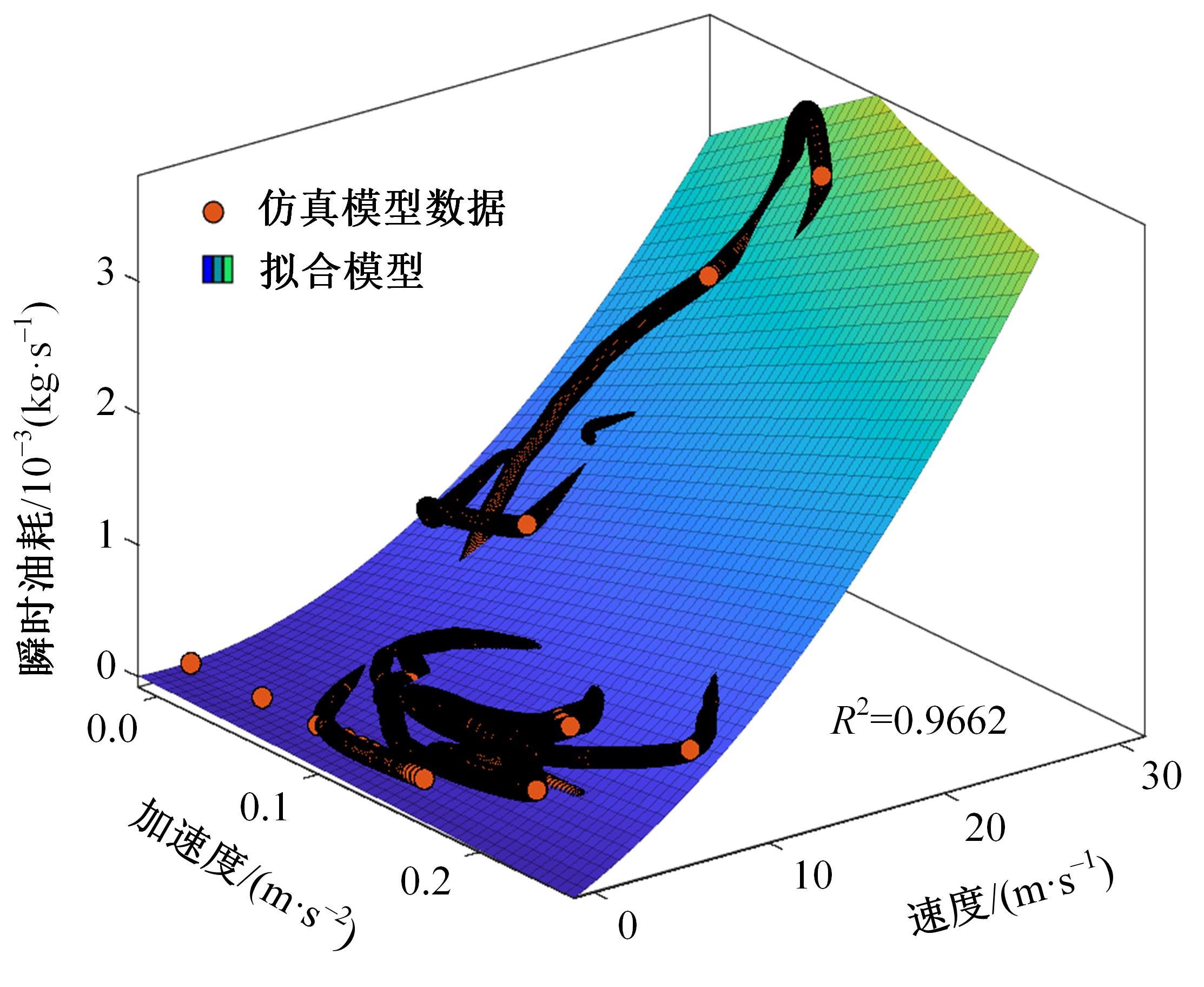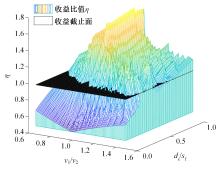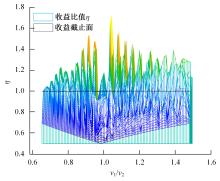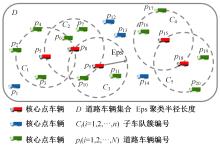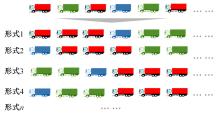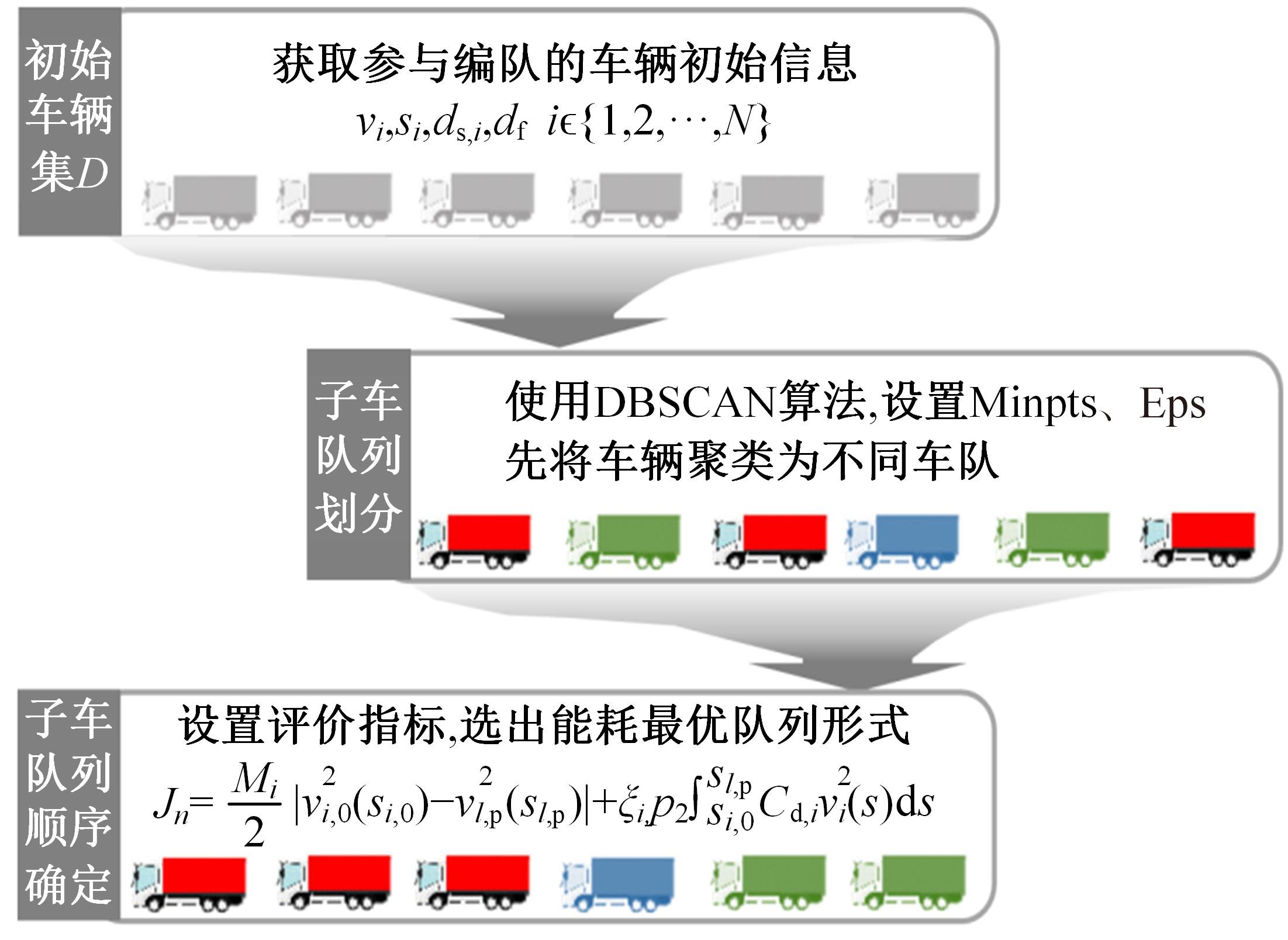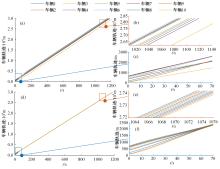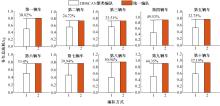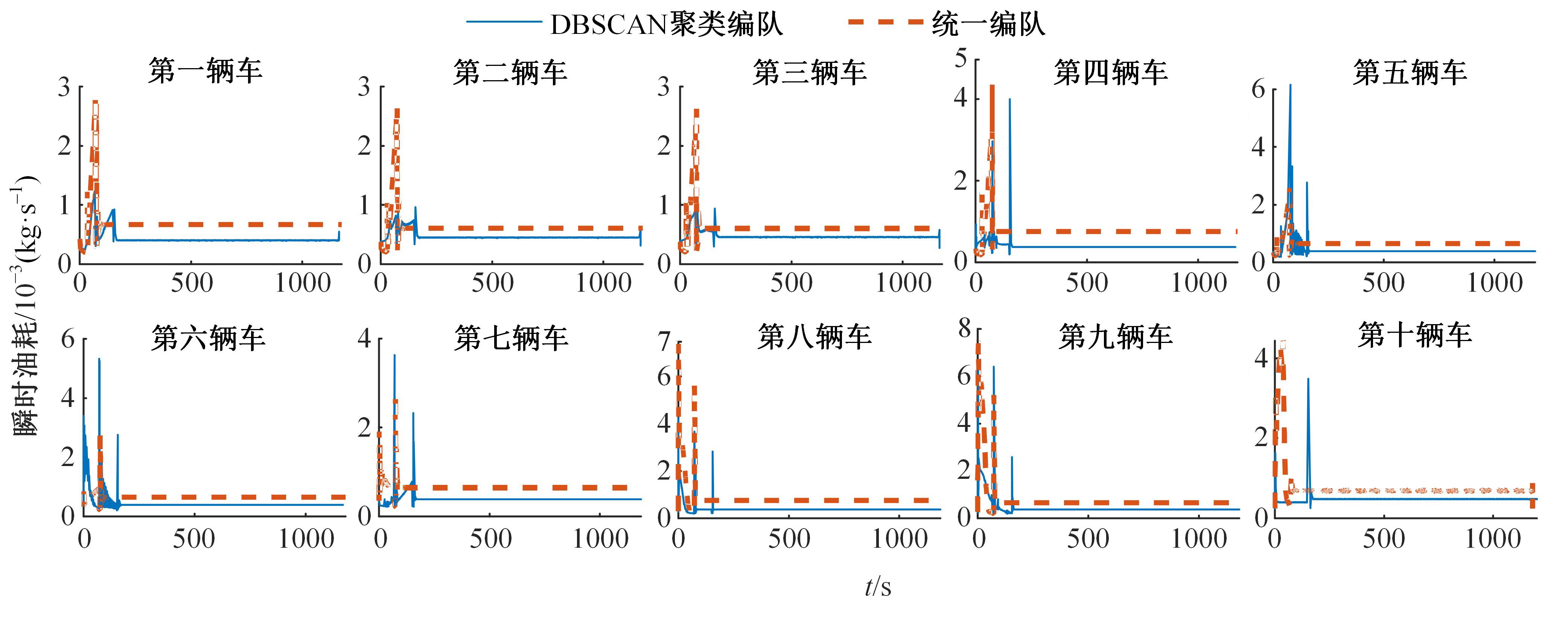吉林大学学报(工学版) ›› 2024, Vol. 54 ›› Issue (5): 1459-1468.doi: 10.13229/j.cnki.jdxbgxb.20220733
• 通信与控制工程 • 上一篇
基于密度聚类的商用车编队策略
- 1.吉林大学 汽车底盘集成与仿生全国重点实验室, 长春 130022
2.吉林大学 通信工程学院, 长春 130022
3.同济大学 电子与信息工程学院, 上海 201804
Commercial vehicle formation strategy based on density clustering
Di LIU1,2( ),Yao SUN1(
),Yao SUN1( ),Yun-feng HU1,2,Hong CHEN3
),Yun-feng HU1,2,Hong CHEN3
- 1.National Key Laboratory of Automotive Chassis Integration and Bionics,Jilin University,Changchun 130022,China
2.College of Communication Engineering,Jilin University,Changchun 130022,China
3.College of Electronics and Information Engineering,Tongji University,Shanghai 201804,China
摘要:
编队过程增加的油耗小于队列运行降低的油耗时车辆编队行驶总油耗才会降低。为了形成具有节油潜力的商用车队,提出了基于密度聚类的商用车编队策略。首先,使用Trucksim中的商用车模型采集油耗数据,通过拟合建立等效油耗模型并转化到距离域内进行了简化;其次,利用两车编队优化问题获得具有节油潜力的编队标准;然后,在密度聚类中使用该标准将分散的商用车聚类为子车队簇,定义等效油耗最优函数确定最终整体队列形式。最后,通过联合仿真验证了本文提出的编队策略在编队节油方面的有效性与优越性。
中图分类号:
- TP393.08
| 1 | Li Y F, Chen W B, Peeta S, et al. Platoon control of connected multi-vehicle systems under V2X communications: design and experiments[J]. IEEE Transactions on Intelligent Transportation Systems, 21(5): 1891-1902, 2020. |
| 2 | Liang K Y, Martensson J, Johansson K H. Heavy-duty vehicle platoon formation for fuel efficiency[J]. IEEE Transactions on Intelligent Transportation Systems, 17(4): 1051-1061, 2016. |
| 3 | Zheng Y N. Time-varying formation control for unmanned intelligent vehicle (UIV) with mobile reference center[C]∥2021 Asia-Pacific Conference on Image Processing, Electronics and Computers, Dalian, China, 2021: 1952-1960. |
| 4 | Jond H, Yildiz A. Connected and automated vehicle platoon formation control via differential games[J]. IET Intelligent Transport Systems, 17(2): 312-326, 2022. |
| 5 | Wang Peng, Chen Zi-yin, Zhang Xiao-bing, et al. Space-and-time-synchronized simultaneous vehicle tracking/formation using cascaded prescribed-time control[J]. International Journal of Robust and Nonlinear Control,2022, 32(4): 2380-2398. |
| 6 | Wei Shou-yang, Zou Yuan, Zhang Xu-dong, et al. An integrated longitudinal and lateral vehicle following control system with Radar and vehicle-to-vehicle communication[J]. IEEE Transactions on Vehicular Technology, 2019, 68(2): 1116-1127. |
| 7 | He Deng-feng, Qiu Tian-xiang, Luo Ren-shi. Fuel efficiency-oriented platooning control of connected nonlinear vehicles: a distributed economic MPC approach[J]. Asian Journal of Control, 2020,22(4): 1628-1638. |
| 8 | Mihaly A, Farkas Z, Gaspar P. Model predictive coordination of autonomous vehicles crossing intersections[C]∥ 21st IFAC World Congress, Berlin, Germany, 2020: 15174-15179. |
| 9 | 马 彦,黄健飞,赵海艳. 基于车间通信的车辆编队控制方法设计[J]. 吉林大学学报:工学版, 2020, 50(2): 711-718. |
| Ma Yan, Huang Jian-fei, Zhao Hai-yan. Method of vehicle formation control based on vehicle to vehicle communication[J]. Journal of Jilin University (Engineering and Technology Edition), 2020, 50(2): 711-718. | |
| 10 | Kianfar R, Falcone P, Fredriksson J. A control matching model predictive control approach to string stable vehicle platooning[J]. Control Engineering Practice, 2015,45(12): 163-173. |
| 11 | Wen Shi-xi, Guo Ge. Control of leader-following vehicle platoons with varied communication range[J]. IEEE Transactions on Intelligent Vehicles,2020, 5(2): 240-250. |
| 12 | Turri V, Besselink B, Johansson K H. Cooperative look-ahead control for fuel-efficient and safe heavy-duty vehicle platooning[J]. IEEE Transactions on Control Systems Technology, 2016, 25(1): 12-28. |
| 13 | Li Sheng-bo, Li Ren-jie, Wang Jian-qiang, et al. Stabilizing periodic control of automated vehicle platoon with minimized fuel consumption[J]. IEEE Transaction on Transportation Electrification, 2016, 3(1): 259-271. |
| 14 | 陈兴. 自主重型车队的油耗优化问题研究[D]. 大连:大连海事大学船舶电气工程学院, 2019. |
| Chen Xing.The optimization research for autonomous heavy-duty vehicle platoon's fuel consumption[D]. Dalian: College of Merine Electrical Engineering, Dalian Maritime University, 2019. | |
| 15 | Kamal M, Abdus S, Mukai M, et al. Model predictive control of vehicles on urban roads for improved fuel economy[J]. IEEE Transactions on Control Systems Technology, 2013,21(3): 831-841. |
| 16 | 宋大凤, 吴西涛, 曾小华, 等. 基于理论油耗模型的轻混重卡全生命周期成本分析[J]. 吉林大学学报:工学版, 2018,48(5): 1313-1323. |
| Song Da-feng, Wu Xi-tao, Zeng Xiao-hua, et al. Life cycle cost analysis of mild hybrid heavy truck based on theoretical fuel consumption model[J]. Journal of Jilin University (Engineering and Technology Edition), 2018,48(5): 1313-1323. | |
| 17 | Chen Hong, Guo Lu-lu, Ding Hai-tao, et al. Real time predictive cruise control for eco-driving taking into account traffic constraints[J]. IEEE Transactions on Intelligent Transportation Systems, 2019,20(8): 2858-2868 . |
| 18 | 李文杰, 闫世强, 蒋莹,等. 自适应确定DBSCAN算法参数的算法研究[J]. 计算机工程与应用, 2019, 55(5): 1-7. |
| Li Wen-jie, Yan Shi-qiang, Jiang Ying, et al. Research on method of self-adaptive determination of DBSCAN algorithm parameters[J]. Computer Engineering and Applications, 2019, 55(5): 1-7. | |
| 19 | 戴阳阳, 李朝锋, 徐华. 初始点优化与参数自适应的密度聚类算法[J]. 计算机工程, 2016, 42(1): 203-209. |
| Dai Yang-yang, Li Chao-feng, Xu Hua. Density clustering algorithm with initial point optimization and parameter self-adaption [J]. Computer Engineering, 2016, 42(1): 203-209. | |
| 20 | 夏鲁宁, 荆继武. SA-DBSCAN:一种自适应基于密度聚类算法[J]. 中国科学院大学学报, 2009, 26(4): 530-538. |
| Xia Lu-ning, Jing Ji-Wu. SA-DBSCAN:a self-adaptive density-based clustering algorithm [J]. Journal of the Graduate School of the Chinese Academy of Sciences, 2009, 26(4): 530-538. | |
| 21 | 胡云峰, 丁一桐, 赵志欣, 等. 柴油发动机燃烧过程数据驱动建模与滚动优化控制[J]. 吉林大学学报:工学版, 2021, 51(1): 49-62. |
| Hu Yun-feng, Ding Yi-tong, Zhao Zhi-xin, et al. Data-driven modeling and receding optimization control of diesel engine combustion process [J]. Journal of Jilin University (Engineering and Technology Edition), 2021, 51(1): 49-62. |
| [1] | 毛伊敏,顾森晴. 基于MapReduce与优化布谷鸟算法的并行密度聚类算法[J]. 吉林大学学报(工学版), 2023, 53(10): 2909-2916. |
| [2] | 秦大同, 杨官龙, 胡明辉, 刘永刚, 林毓培. 基于驾驶意图的插电式混合动力汽车能量管理策略[J]. 吉林大学学报(工学版), 2015, 45(6): 1743-1750. |
| [3] | 陈涛, 邓辉舫, 刘靖. 基于密度聚类和多示例学习的图像分类方法[J]. 吉林大学学报(工学版), 2014, 44(4): 1126-1134. |
| [4] | 张君媛,解东旋,张昕,唐洪斌. 新型重型平头商用车前悬置支架和吸能器结构设计[J]. 吉林大学学报(工学版), 2014, 44(3): 612-617. |
| [5] | 宗长富, 聂枝根, 王化吉. 商用车简化模型参数辨识方法[J]. 吉林大学学报(工学版), 2013, 43(05): 1171-1177. |
| [6] | 陈宇东1,裴春艳1,潘淑华2,刘晓军1,张俊兴1. 整车环境下商用车驾驶室模态刚度灵敏度[J]. 吉林大学学报(工学版), 2011, 41(4): 1025-1028. |
| [7] | 麦莉, 宗长富, 王化吉, 朱天军. 重型商用车侧翻预测模型试验标定方法[J]. 吉林大学学报(工学版), 2010, 40(增刊): 60-0065. |
| [8] | 杨钫, 王庆年, 卢京民, 郑益宏. 混合动力商用车仿真模型与实车试验对比[J]. 吉林大学学报(工学版), 2010, 40(增刊): 35-0038. |
| [9] | 张君媛, 陈光, 刘德琦, 陆善彬, 唐洪斌, 龚礼州. 基于简化模型的商用车正面抗冲击性设计方法[J]. 吉林大学学报(工学版), 2010, 40(增刊): 95-0100. |
| [10] | 麦莉,曲伟,朱天军,于志新. 基于模型预测的重型商用车侧翻预警算法[J]. 吉林大学学报(工学版), 2010, 40(04): 906-0910. |
| [11] | 郭立群,王登峰. 车架刚度对商用车乘坐舒适性的影响[J]. 吉林大学学报(工学版), 2010, 40(04): 911-0914. |
| [12] | 王庆年,郑君峰,王伟华 . 一种新的并联混合动力客车的自适应控制策略[J]. 吉林大学学报(工学版), 2008, 38(02): 249-0253. |
| [13] | 贾洪飞, 隽志才, 张枭雄, 倪安宁. 高速公路后评价油耗指标的确定与对比[J]. 吉林大学学报(工学版), 2004, (2): 298-301. |
| [14] | 张健, 王永清, 李江. 低温对车辆燃油消耗的影响规律[J]. 吉林大学学报(工学版), 2003, (3): 38-41. |
| [15] | 张健, 李江. 变速交通流下的车辆油耗规律[J]. 吉林大学学报(工学版), 2002, (4): 59-61. |
|
||



